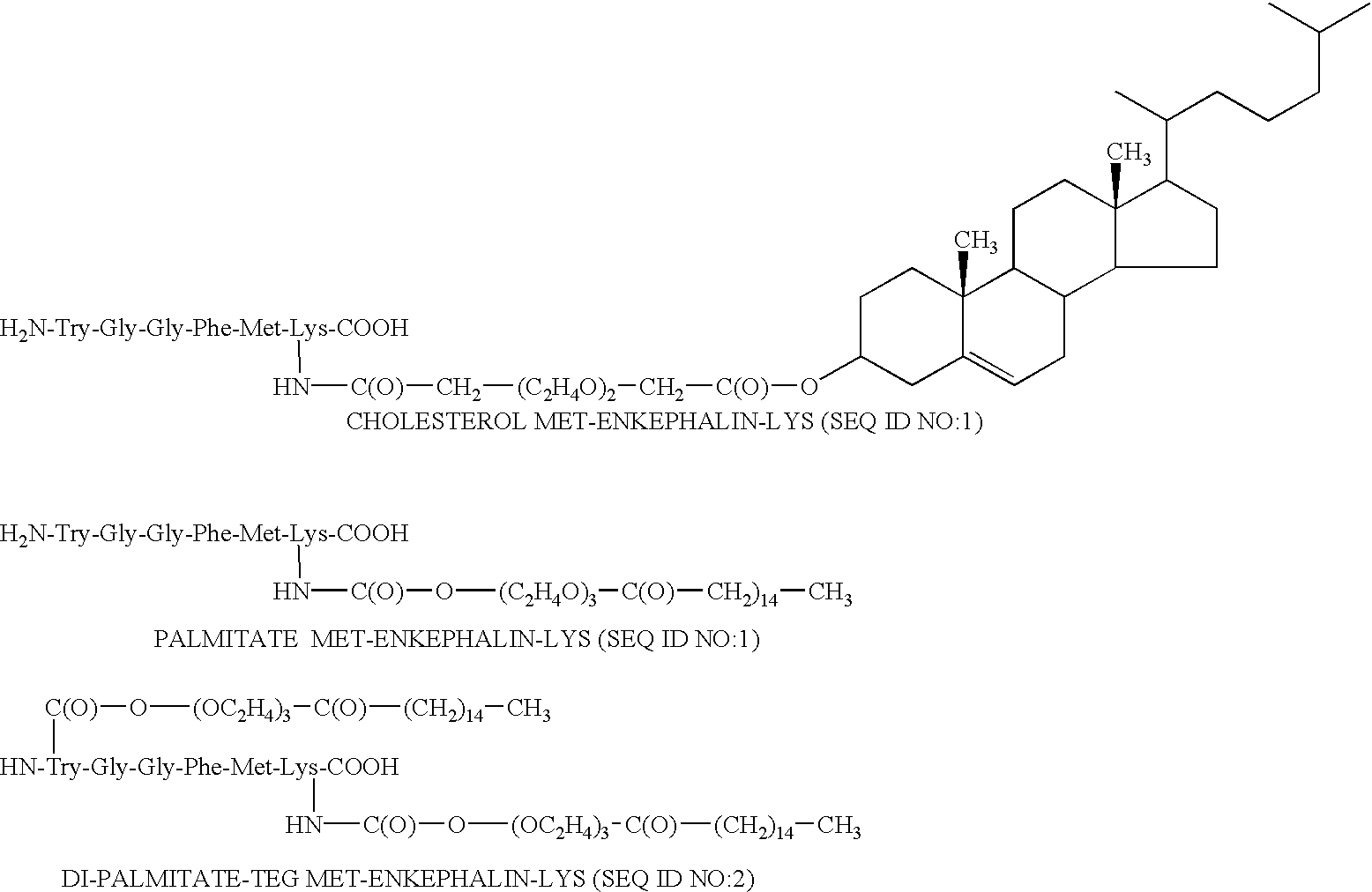Methods for delivery therapeutic compounds across the blood-brain barrier
a technology of bloodbrain barrier and therapeutic compound, which is applied in the direction of drug composition, enzyme stabilisation, peptide/protein ingredient, etc., can solve the problems of limiting the use of many compounds for use as cns therapeutic agents, peptide delivery to the cns is metabolic instability, and it is not possible to protect peptides from the wide range of peptide degradation. , to achieve the effect of increasing the amphiphilicity of the conjuga
- Summary
- Abstract
- Description
- Claims
- Application Information
AI Technical Summary
Benefits of technology
Problems solved by technology
Method used
Image
Examples
Embodiment Construction
The covalent bond between the oligomer and the drug is preferably amide (a carboxy group of the oligomer is linked to an amine group of the peptide), or carbamate (a chloroformate Aid , group of the oligomer is linked to an amine group of the peptide).
For non peptide drug, the bond is preferably ester (a carboxy group of the drug is covalently coupled to a hydroxyl group of the oligomer or a carboxy group of the oligomer is covalently coupled to a hydroxyl group of the drug), amide (a carboxy group of the oligomer is linked to an amine group of the drug) or carbamate (a chloroformate group of the oligomer is linked to an amine group of the drug). For the enkephalin analogues, the preferred peptides are leu-enkephalin lysine (SEQ ID NO:50) and met enkephalin lysine (SEQ ID NO:49). The amino residue of the lysine is preferably utilized in bonding.
Other preferred amphiphilic moieties are sugar moieties, coupled to natural fatty acids and segments of polyethylene glycol. The PEG moiety ...
PUM
| Property | Measurement | Unit |
|---|---|---|
| molecular weight | aaaaa | aaaaa |
| temperature | aaaaa | aaaaa |
| temperature | aaaaa | aaaaa |
Abstract
Description
Claims
Application Information
 Login to View More
Login to View More - R&D
- Intellectual Property
- Life Sciences
- Materials
- Tech Scout
- Unparalleled Data Quality
- Higher Quality Content
- 60% Fewer Hallucinations
Browse by: Latest US Patents, China's latest patents, Technical Efficacy Thesaurus, Application Domain, Technology Topic, Popular Technical Reports.
© 2025 PatSnap. All rights reserved.Legal|Privacy policy|Modern Slavery Act Transparency Statement|Sitemap|About US| Contact US: help@patsnap.com



